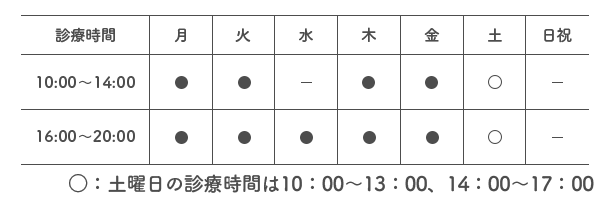As RPA technology matures and becomes a must-have for more and more banks, the regulation complexity is bound to become easier via investments made in digital transformation. Finally, the lack of legal regulations to govern automation is a significant problem in RPA adoption. The industry involves many different legal requirements and constraints for process automation.
There are four types of automation systems: fixed automation, programmable automation, flexible automation and integrated automation.
Early adopters will hold a strong position while the late adopters, over time, are likely to lose competitiveness, potentially irreversibly. Automation is key to survival in a hyper-competitive market and increasing customer and employee satisfaction levels. However, throwing AI at an individual problem or experimenting with automation on the side is no longer sufficient. View our case study on how Sutherland delivered a fully comprehensive virtual finance and accounting training program for a client in just 8 weeks. Sutherland helps leading lending platform increase efficiency with Sutherland Robility™ bots.
The term BPA, as noted, is used to characterize a collection of automation capabilities for streamlining and improving business processes. Robotic process automation (RPA) is a subset of BPA that focuses on automating how humans use software applications at work. It’s attractive to businesses because it provides a quick path to automating the way humans interact with and copy data between the applications they use to do their jobs. Using RPA software, workers and developers alike can record the rough draft for a simple automation by clicking and scrolling their way through a business process. The various RPA platforms then harden these basic programs against changes in the application layouts or workflows. These technologies can help banks identify transaction anomalies, extract information, gain insights, streamline manual tasks, prevent financial loss, reduce risk and improve customer experiences.
This leaves limited time and resources for higher-value activities, such as innovation, relationship-building and analysis. In this sense, automation is an enabler that frees up urgently needed resources. Organizational culture
While RPA will reduce the need for certain job roles, it will also drive growth in new roles to tackle more complex tasks, enabling employees to focus on higher-level strategy and creative problem-solving.
Compliance and auditing requirements are typically easier to manage in automated processes. As noted in this article on BPA benefits, automation is also not a one-and-done metadialog.com effort. Enterprises should periodically review how automated processes are affected by changes in governance requirements, regulations, security and other factors.
Building the future of banking.
Posted: Thu, 09 Mar 2023 08:00:00 GMT [source]
At Geniusee, we facilitate companies by providing essential services to gain a competitive edge by utilizing these digital banking trends. To sum up, with the continuous and radical changes in digital technology, banks are also transforming themselves by taking advantage of new technologies. Covid-19 has disrupted every industry globally and forced enterprises to change their existing way of doing business. People and businesses are relying more on digital banking in their basic banking activities. Customer service and support will become essential with the increasing trend of branchless mobile banking.
RPA software provides pre-built automation solutions that can be added to your workflows with minimal effort involved.The three leading RPA vendors are UiPath, Automation Anywhere, and Workfusion. Their software provides the basic functionality needed to start RPA projects. To fully leverage their technology, many banks choose to work with these vendors’ system integration partners. Partners are certified to help with RPA and can make implementation projects a smoother process. Most US banks take around days to originate and finish processing a mortgage loan. Banks need to go through numerous steps including credit checks, employment verification, and inspection before approving the loan.
The process is based on rules and checks and so RPA can speed up the process and eliminate the bottleneck, reducing processing time from days to minutes. The vendor details from the digital copy physical form can be read by OCR and provided to the RPA system. RPA will compare the data to what is in the system and then process the payment. RPA software can manage complex procedures, comprehend human language, discern emotions, and adjust to real-time data as a result of this.
According to the latest trends, a bank will need to focus more on openness and transparency instead of just relying on typical retail banking practices. For example, Monzo — a completely app-based online bank formed in the UK in 2015 — has more than five million users. Monzo has proven that with transparency, new financial institutions can quickly grab the market share of old-school financial institutions that have been present for centuries. Customer service plays a big role, at least from the customer’s point of view. Online banks can offer better customer service than traditional banks because their customers can communicate using bank websites, mobile apps, and social media. Online banking provides more ways to contact support than traditional banks, which only provide one way to contact their customer service department.

With five RPA bots, the bank automated 20 financial business processes, including treasure operations, obligation payments, internal invoicing, and calculating and booking. Rather than spending valuable time gathering data, employees can apply their cognitive abilities where they are truly needed. Essentially, the loan processing volume is capped by the number of employees dedicated to the task. Besides customer service automation, RPA technology in banking can bring real value by automating many loan administration processes, including underwriting and validation.
After this process, you will wait for days, or weeks, to receive a letter in the mail to find out if you’ve even been approved. Then, on the off chance that you don’t mistake the letter for junk mail and throw it away, you’ll either have a credit card or a rejection letter. You can build custom connectors for on-premise or cloud applications not yet supported by the platform. You can connect to printers and scanners, SAP, databases- developers don’t feel boxed-in. Within automated processes and workflows, you can write code for data transformations in individual steps of the recipes.

They scan and understand what’s happening on a screen, complete keystroke sequences, then process the collected data just like real people do. No one knows what the future of banking automation holds, but we can make some general guesses. For example, AI, natural language processing (NLP), and machine learning have become increasingly popular in the banking and financial industries.
With the rise in digital banking users, a bank cannot afford to have faulty server downtime. Even a few minutes can destroy the reputation and goodwill they created over decades. For example, the State Bank of India’s system outage resulted in major revenue losses for the bank. More than 16,000 financial transactions take place on the platform every hour, so every minute counts. There has been a massive growth in the use of cloud computing in digital banking innovation trends. Cloud computing is a concept in which computing services such as software, data warehouses, and digital networking tools are readily available on the internet.
By embracing RPA, banks can improve the customer experience while reducing costs and improving efficiency. Increased automation combined with more efficient processes makes the day-to-day easier for employees as they’ll spend less time on tedious manual work, and more time on profitable projects. The concept of a “digital workforce” is emerging these days due to the advancement of digital technologies. Robots take care of data entry, payroll, and other data processing tasks, while humans analyze reports for gathering useful insights. On top of that, the human workforce can have their banking robots help them gather information and process data quickly so humans can complete their work with higher efficiency. Due to COVID-19, cost savings initiatives are a major focus for banks in order to be competitive and provide better services.
Digital transformation and banking automation have been vital to improving the customer experience. Some of the most significant advantages have come from automating customer onboarding, opening accounts, and transfers, to name a few. Chatbots and other intelligent communications are also gaining in popularity.
The critical difference is that RPA is process-driven, whereas AI is data-driven. RPA bots can only follow the processes defined by an end user, while AI bots use machine learning to recognize patterns in data, in particular unstructured data, and learn over time. Put differently, AI is intended to simulate human intelligence, while RPA is solely for replicating human-directed tasks. While the use of artificial intelligence and RPA tools minimize the need for human intervention, the way in which they automate processes is different.
Financial automation allows employees to handle a more manageable workload by eliminating the need to manually match and balance transactions. Having a streamlined financial close process grants accounting personnel more time to focus on the exceptions while complying with strict standards and regulations.
Banks can automate their processes with the use of technology to boost productivity without complicating procedures that require compliance. Second, banks must use their technical advantages to develop more efficient procedures and outcomes. Technology is rapidly developing, yet many traditional banks are falling behind. Enabling banking automation can free up resources, allowing your bank to better serve its clients. Customers may be more satisfied, and customer retention may improve as a result of this.
Rest assured that your success with OpCon is guaranteed, providing you with peace of mind. With SMA’s extensive migration expertise and transparent pricing – and without any hidden fees or surprise add-ons— it’s no wonder we have a track record of 100% success in migrating clients to OpCon. Update your browser for more security, speed and the best experience on this site. Last but not least, the bot creates a summarized report, in Excel, for the Operations and Risk Team to review. It’s a detailed report, with separate tabs for totals, raw data, ATM images, and more. The bot even embeds the actual PDF of the Suspicious Cash Transactions Report directly into the Excel sheet—a nice touch.
Video Interview Software Market Giants Spending Is Going To Boom ….
Posted: Tue, 06 Jun 2023 10:14:55 GMT [source]
SMiLE 整骨院
| 診療時間 |  |
|---|---|
| 住所 | 〒112-0006 東京都文京区小日向4-5-10 小日向サニーハイツ201 |
| アクセス | 東京メトロ丸の内線「茗荷谷」駅 徒歩2分 |